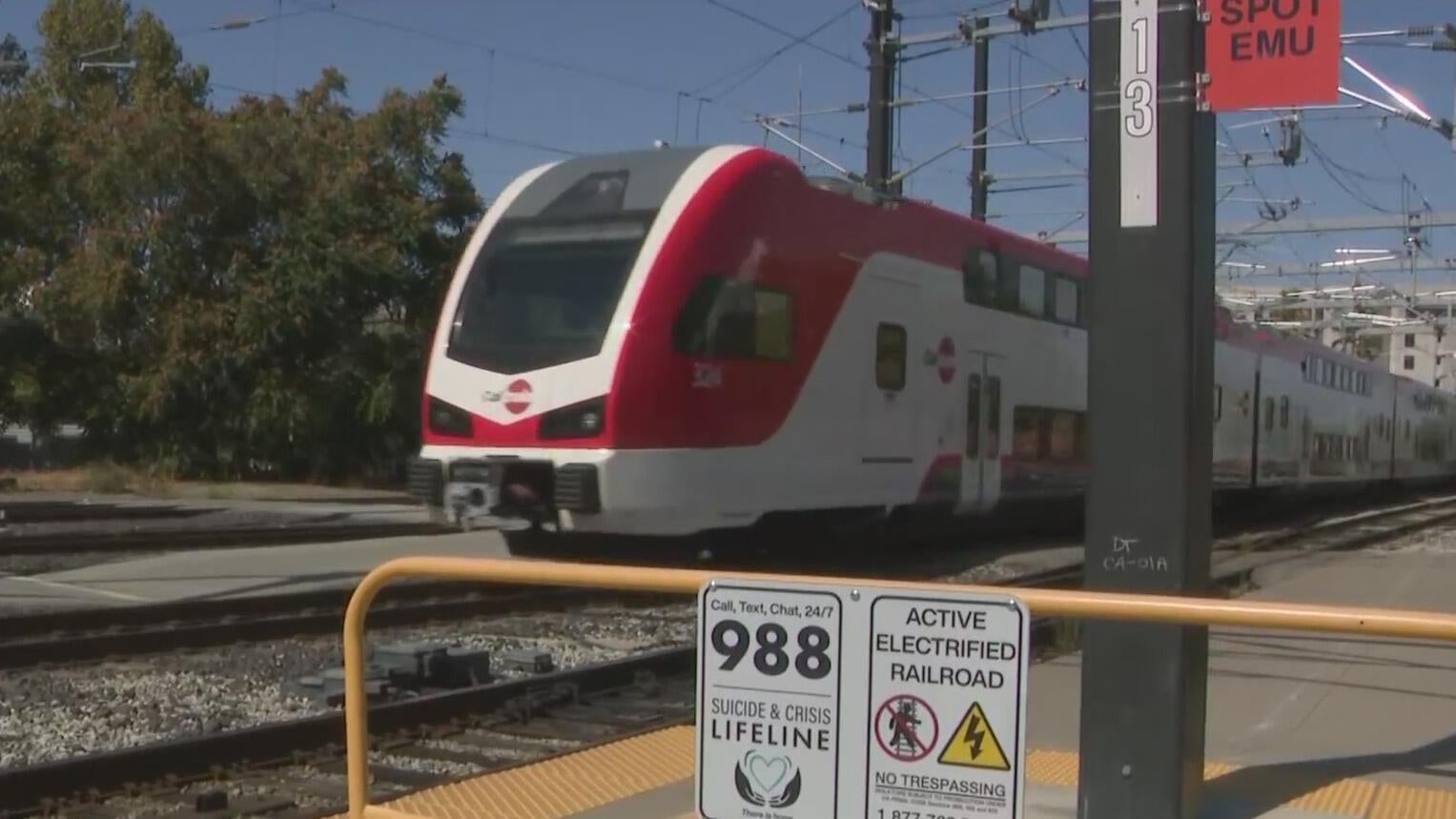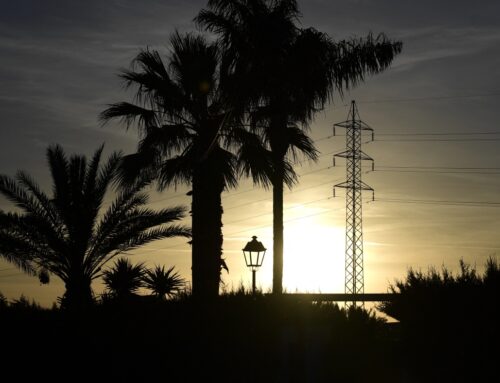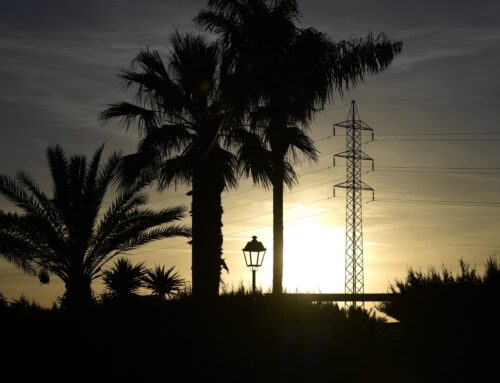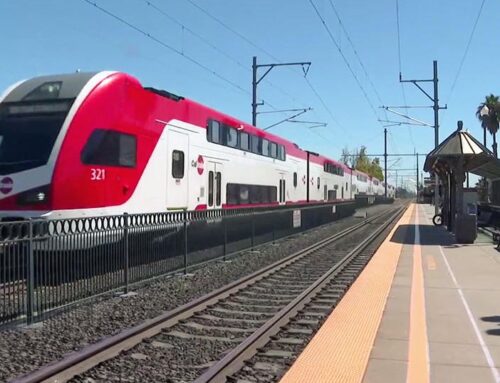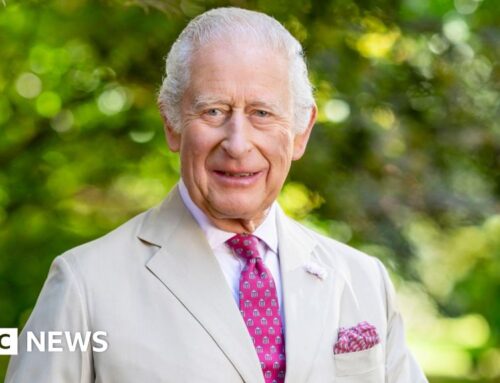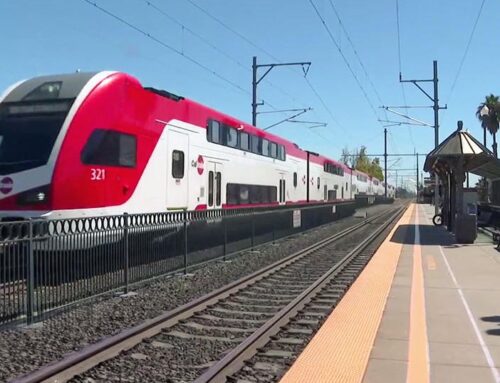Caltrain electrified trains return power to grid, offsetting energy costs
October 8, 2025
For decades, Caltrain has been known for what it takes off the roads. Now, it’s being rewarded for what it puts back into the power grid.
On the surface, it looks like any other train. But inside each of Caltrain’s 37 electric trains, something revolutionary is happening. When these trains slow down, they don’t just brake; they breathe energy back into the grid.
More than a year after completing its $2.5 billion electrification project, Caltrain’s entire fleet now runs on renewable power: solar, wind, and clean energy supplied by Peninsula Clean Energy and San Jose Clean Energy.
On Tuesday, Caltrain Executive Director Michelle Bouchard announced that the agency will now be compensated for the electricity it sends back.
“We are here to celebrate an amazing partnership that will support renewable and clean energy back into our community,” Bouchard said.
The technology that makes it possible is called regenerative braking. Every time a train slows down, about 23% of its power is fed back into the grid. Until now, that energy was returned for free.
Assemblymember Diane Papan, who represents California’s 21st District, authored a bill to ensure public transit systems that generate renewable power are compensated for it.
“Caltrain was sending new, renewable energy back to the grid but wasn’t getting credit for it,” Papan said. “If this was rooftop solar, we’d absolutely get credit for what we sent back.”
While the bill never became law, Caltrain negotiated its own deal, the first of its kind in California, through partnerships with Peninsula Clean Energy and San Jose Clean Energy.
“Our partnership is doing exactly what the community wants: cleaner air, smart policy, and a better grid,” said Shalini Swaroop of Peninsula Clean Energy.
Caltrain estimates the switch to electric has already cut greenhouse gas emissions by roughly 250,000 metric tons each year, the equivalent of removing 55,000 cars from Bay Area roads.
San Jose Mayor Matt Mahan called the announcement another example of innovation in public transit.
“This is a smart, sustainable step, and it shouldn’t stop here,” Mahan said. “We need this kind of innovation statewide so every system can make transit cleaner.”
Caltrain says the move could offset millions in energy costs annually and serve as a model for other transit agencies looking to put power back into the communities they serve.
Featured Local Savings
Search
RECENT PRESS RELEASES
Related Post
